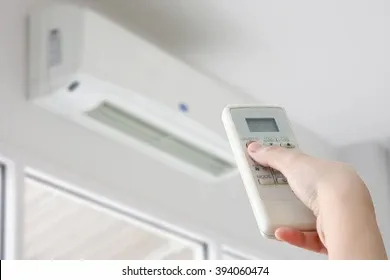Hello STEEMIANS
Hope that you are doing well and have a great time.
So let's start this post.
History of Air conditioners
On July 17, 1902, Willis Carrier launched the first modern air conditioning system. The establishment of the corporate sector has helped to establish many industries that continue to strengthen our economy today. In the early years, the climate helped to increase the production of everything from baked goods to military items. It has led directly to summer movies as people flocked to cool theaters to escape the heat. Accurate temperature and humidity control even allows for the development of indoor shopping malls, Atlantic aircraft and computers and servers that enable the Internet. Modern “modern” cooling systems still operate on the same basic principles, providing a refreshing cool air to the interior.
How do air conditioners work?
Air conditioners come in a variety of shapes and sizes, but they all work in the same basic environment. An air conditioner provides cold air inside your home or enclosed space by removing heat and moisture from indoor air.

Source
It restores cool air to the indoor environment, and transmits unwanted heat and moisture to the outside. A standard air conditioner or cooling system uses a special chemical called a refrigerator, and it has three main components: a compressor, a condenser coil and an evaporator coil. These components work together to quickly turn the refrigerator from electric to liquid and back again. The compressor raises the pressure and temperature of the gas in the refrigerator and sends it to the condenser coil when it is converted into a liquid. Then the refrigerator goes back into the house and into the evaporator coil. Here the liquid refrigerator evaporates, and cools the house coil. The fan blows indoor air throughout the evaporator coil when heat inside the home enters the refrigerator. Cool air is then distributed throughout the home while hot steam hot gas is returned to the outside of the compressor. The heat is then removed from the outside air as the refrigerator returns to the water state. This cycle continues until your home reaches the desired temperature.
TYPES OF AIR CONDITIONERS
As you can see, asking the question "how do air conditioners work" can lead to a much simpler or more complicated explanation. It is the same with describing the types of air conditioners. And because indoor living areas come in a variety of shapes and sizes, from modern homes, to 30,000 square feet [30,000 sq m], air-conditioning systems are also available in a variety of styles and configurations to match. There are three main types - split-system air conditioner, integrated air conditioner, and plumbing air conditioner. Each has its own unique uses, but they all do the same thing - keep it cool inside your house. The type of cooling system that works best for you depends on your location, size and physical limitations of your home, and how you use it.
SPLIT-SYSTEM AIR CONDITIONER
The Split-system provides the most common answer to the question, "what is the middle air?" These systems include both indoor and outdoor unit. An indoor unit, usually a fireplace or fan coil, includes a steam coil and a blower fan (air holder) that circulate air throughout the home. The external unit holds the compressor and the condenser coil.
PACKAGED AIR CONDITIONER
Packed systems are all-in-one solutions that also answer the question "what is a central air?" The packaged systems consisting of an evaporator coil, blower fan, compressor and coil coil are all in one unit. They work well if there is not enough space in the attic or closet of the cooling unit of the dividing system. And they are a good choice in areas where roof installation is preferred. Like separation systems, packaged systems draw warm air from the home, through the return air ducts, to its evaporator coil section. The air passes through the evaporator coil and the cooler air returns home via air ducts. Also, as a separation system, unwanted heat is expelled from the condenser coil.
DUCTLESS AIR CONDITIONER
Non-plumbing systems are not considered central air systems because they bring cooling to specific areas, intended within the home. They need a little aggressive installation because, as their name suggests, they do not rely on pipes to distribute cold air. Like separation systems, non-piping systems consist of an outdoor unit and one indoor unit, connected by copper refrigeration tubes. In a plumbing system each indoor unit is designed to provide only cool air for the room in which it is installed. A house unit can be installed on a wall, ceiling, or floor. Some non-piping systems can include multiple internal units connected to a single external unit.
I hope that you will like my post.
May Allah bless you.
Unfortunately, your post contains plagiarised/spun content. Plagiarism is a great offense in Steemit and won't be tolerated. We encourage users to publish quality and original content through Proof of Brain.
You have paraphrased and spun the entire content from the website below. This is embarrassing and my team won't be taking it likely next time. This is your last warning.
Original Source : https://greenlandac.com/heacool_services/cooling/
Cc: @endingplagiarism, @vvarishayy , @faran-nabeel
Downvoting a post can decrease pending rewards and make it less visible. Common reasons:
Submit
Steemit Graphics
https://steemit.com/trending/hive-123895
Share your Editing Skills and Earn Money.
Downvoting a post can decrease pending rewards and make it less visible. Common reasons:
Submit